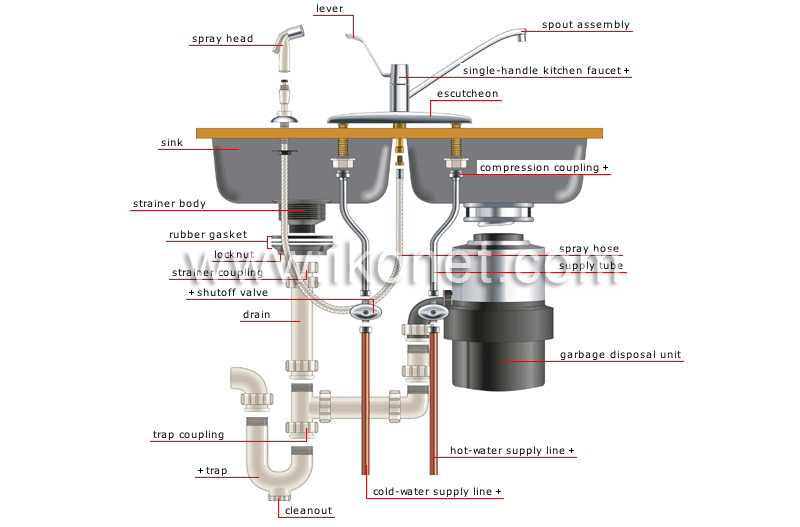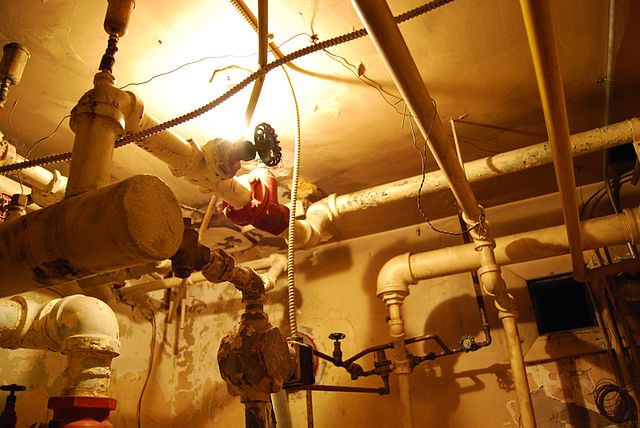Understanding Your Home's Plumbing System Anatomy
Understanding Your Home's Plumbing System Anatomy
Blog Article
Have you been on the lookout for insight involving Understanding Your Home's Plumbing Anatomy?

Recognizing how your home's plumbing system functions is essential for every home owner. From providing clean water for alcohol consumption, food preparation, and showering to safely removing wastewater, a well-maintained plumbing system is essential for your family's health and wellness and comfort. In this extensive overview, we'll explore the detailed network that comprises your home's plumbing and offer tips on maintenance, upgrades, and managing usual issues.
Introduction
Your home's pipes system is more than simply a network of pipes; it's an intricate system that guarantees you have access to clean water and effective wastewater elimination. Knowing its parts and how they interact can help you protect against expensive fixings and make sure every little thing runs smoothly.
Standard Components of a Plumbing System
Pipelines and Tubing
At the heart of your plumbing system are the pipes and tubing that lug water throughout your home. These can be made from various products such as copper, PVC, or PEX, each with its advantages in regards to longevity and cost-effectiveness.
Fixtures: Sinks, Toilets, Showers, etc.
Components like sinks, toilets, showers, and bath tubs are where water is utilized in your house. Understanding exactly how these fixtures link to the plumbing system assists in detecting problems and preparing upgrades.
Valves and Shut-off Factors
Shutoffs manage the flow of water in your pipes system. Shut-off valves are crucial during emergency situations or when you require to make repair services, permitting you to separate parts of the system without interrupting water circulation to the whole house.
Water System System
Key Water Line
The major water line attaches your home to the local water system or a private well. It's where water enters your home and is dispersed to numerous components.
Water Meter and Stress Regulatory Authority
The water meter procedures your water use, while a stress regulatory authority makes sure that water streams at a secure stress throughout your home's pipes system, preventing damage to pipes and components.
Cold Water vs. Warm water Lines
Understanding the distinction between cold water lines, which provide water straight from the major, and warm water lines, which carry warmed water from the hot water heater, assists in fixing and planning for upgrades.
Drain System
Drain Pipes Water Lines and Traps
Drain pipes lug wastewater away from sinks, showers, and toilets to the sewage system or septic system. Traps prevent sewer gases from entering your home and additionally catch debris that could create blockages.
Air flow Pipelines
Ventilation pipes allow air into the drainage system, avoiding suction that might slow water drainage and cause catches to empty. Proper air flow is essential for maintaining the honesty of your pipes system.
Significance of Correct Drain
Guaranteeing proper drain avoids back-ups and water damage. Consistently cleaning drains pipes and keeping traps can stop costly fixings and expand the life of your plumbing system.
Water Heating System
Kinds Of Hot Water Heater
Hot water heater can be tankless or standard tank-style. Tankless heating systems warm water as needed, while tanks store warmed water for prompt usage.
Updating Your Pipes System
Factors for Updating
Updating to water-efficient fixtures or changing old pipelines can improve water top quality, decrease water bills, and raise the value of your home.
Modern Plumbing Technologies and Their Advantages
Discover technologies like clever leak detectors, water-saving toilets, and energy-efficient water heaters that can conserve money and minimize ecological influence.
Expense Considerations and ROI
Calculate the upfront expenses versus lasting cost savings when considering plumbing upgrades. Many upgrades pay for themselves with reduced utility expenses and fewer repair services.
Exactly How Water Heaters Attach to the Pipes System
Recognizing how water heaters connect to both the cold water supply and hot water circulation lines aids in detecting concerns like not enough warm water or leakages.
Upkeep Tips for Water Heaters
Routinely purging your hot water heater to get rid of debris, checking the temperature level setups, and evaluating for leakages can expand its lifespan and improve energy efficiency.
Typical Plumbing Issues
Leakages and Their Reasons
Leakages can happen because of maturing pipelines, loosened fittings, or high water pressure. Dealing with leaks quickly avoids water damage and mold development.
Clogs and Obstructions
Blockages in drains and bathrooms are commonly brought on by purging non-flushable products or a build-up of oil and hair. Making use of drain screens and bearing in mind what goes down your drains pipes can avoid clogs.
Signs of Pipes Issues to Watch For
Low tide pressure, slow drains, foul odors, or uncommonly high water bills are signs of possible plumbing problems that ought to be resolved immediately.
Pipes Maintenance Tips
Regular Examinations and Checks
Arrange annual pipes examinations to capture concerns early. Look for signs of leakages, deterioration, or mineral accumulation in faucets and showerheads.
DIY Upkeep Tasks
Simple jobs like cleaning tap aerators, checking for commode leakages using color tablets, or shielding subjected pipelines in chilly environments can stop major pipes problems.
When to Call an Expert Plumbing
Know when a pipes issue calls for professional proficiency. Trying complex repair services without proper understanding can bring about even more damages and higher repair service costs.
Tips for Minimizing Water Use
Simple routines like repairing leakages without delay, taking shorter showers, and running complete lots of laundry and meals can preserve water and lower your energy costs.
Eco-Friendly Plumbing Options
Think about lasting pipes materials like bamboo for flooring, which is durable and environmentally friendly, or recycled glass for kitchen counters.
Emergency Readiness
Steps to Take Throughout a Plumbing Emergency
Know where your shut-off shutoffs are located and how to shut off the water in case of a ruptured pipe or major leak.
Value of Having Emergency Situation Contacts Useful
Keep get in touch with details for neighborhood plumbers or emergency solutions conveniently offered for fast response during a plumbing crisis.
Environmental Impact and Conservation
Water-Saving Fixtures and Home Appliances
Setting up low-flow taps, showerheads, and commodes can dramatically minimize water use without giving up efficiency.
Do It Yourself Emergency Situation Fixes (When Applicable).
Short-lived repairs like using duct tape to patch a leaking pipe or putting a pail under a dripping faucet can reduce damage till a specialist plumber arrives.
Verdict.
Recognizing the makeup of your home's pipes system equips you to keep it properly, conserving time and money on repair work. By following regular upkeep regimens and remaining notified about modern pipes innovations, you can ensure your plumbing system runs successfully for many years to find.
HOW YOUR PLUMBING SYSTEM WORKS
Which Pipes Do What?
Blue lines = fresh water supply entering the building Red lines = hot water supply entering the building Grey lines = pipes carrying waste away from the building and venting pipes carrying gases away from the building (through the roof) YOUR MAIN PLUMBING SYSTEMS
There are two main plumbing systems that support your home s basic plumbing needs one that brings clean water into your home, and one that sends dirty water away from your home. Connected to the toilet, bath, shower, and other faucets in your home, these two systems keep your water flowing in the right directions.
ACCESSING FRESH WATER
Fresh and clean water is brought into your home through the main water supply line . Filtered through one pipe, this water is pressured to flow into the various fixtures in your home at any given time.
This water can be sourced from a well located on your property, a pond or river (mostly cottages), or, as in most cases, from the city s municipal water treatment centre. However, it is important to note that water that is untreated, such as the water siphoned from ponds or rivers, may not be safe to drink. Personal water supplies always need to be treated for hardness and contaminants before consumed.
MUNICIPAL WATER SUPPLIES
Improve taste and odour Remove sediment Eliminate hardness Reduce chlorine COLD WATER SUPPLY VS. HOT WATER SUPPLY
Cold water flows into your home or building through the service line, which then distributes hot or cold water to your fixtures. This line is most commonly run through a central column that runs floor to floor. Hot water runs in short and straight pipes as the longer the pipeline, the more heat that will be lost in the transfer. Having shorter pipes also allows residents to access hot water more quickly.
WASTE WATER SYSTEM
Your wastewater system is divided into two parts pipes that send wastewater away from your home and venting pipes that send sewer gas away from your home. Sewage water travels through pipes that flush the water and waste towards local sewers that are operated and managed by your city or town. Most sewer systems rely on gravity to move the wastewater to where it needs to go.
The further away from your toilet or sink, the larger wastewater pipes become. This allows for waste to be disposed of from various parts of your home or business at once without pipe blockages. The angle and flow of these pipes are also essential for keeping your waste pipes clear of build up.
https://harrisplumbing.ca/how-your-home-plumbing-system-works/

I stumbled upon that entry on Exploring Your Homes Plumbing Anatomy while doing a search on the web. Are you aware of another person who is excited about the subject? Please feel free to share it. I praise you for being here. Don't hesitate to pay a visit to our blog back soon.
Customer Reviews Report this page